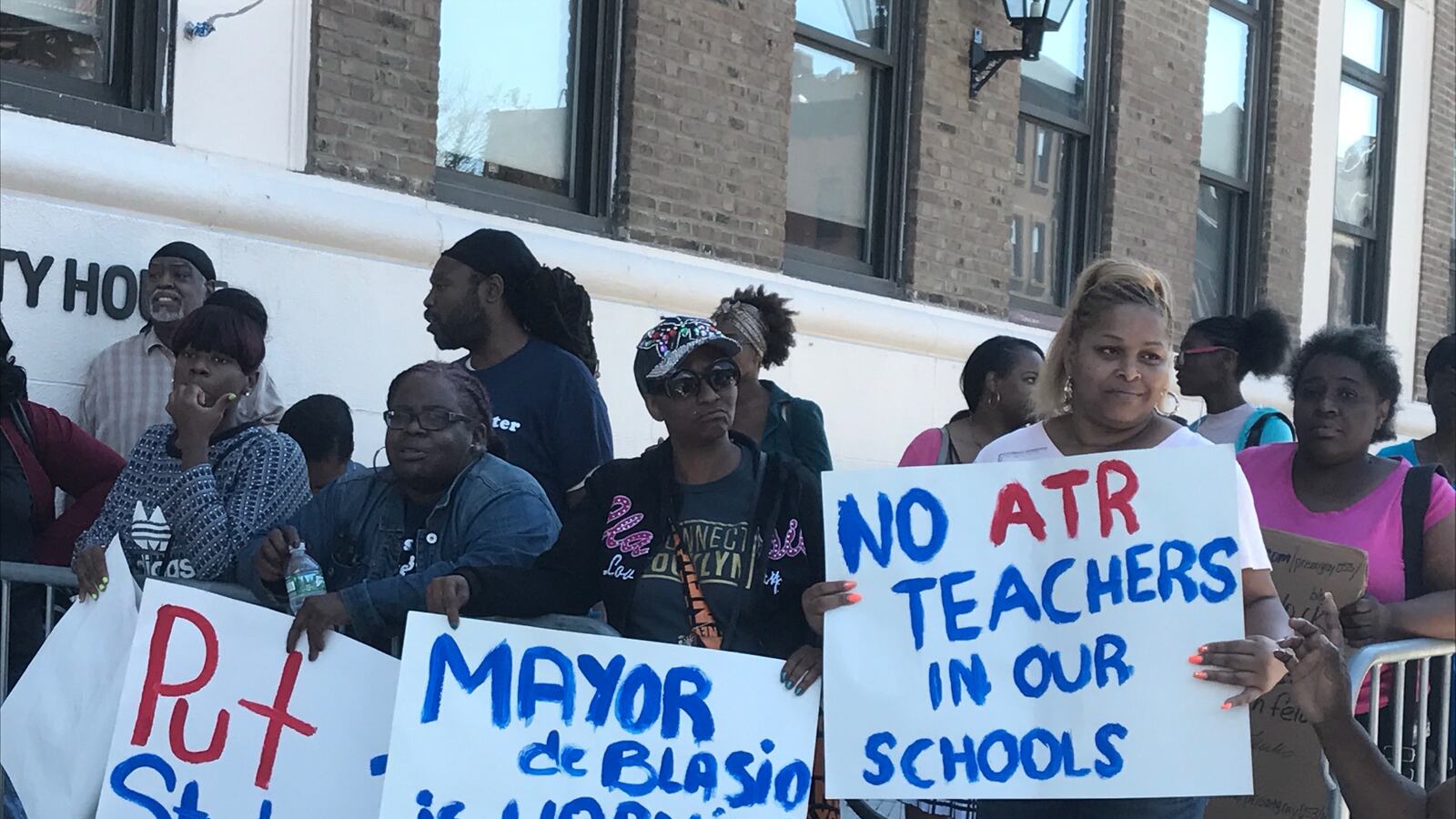When city officials announced a plan to place hundreds of teachers without permanent positions into classroom vacancies this fall, an immediate question arose: Could schools afford them?
That’s a critical question because the pool, known as the Absent Teacher Reserve, has historically been made up of teachers who are more senior than average, and therefore more expensive. Some principals say that makes an already bitter pill — having a teacher they didn’t choose — even tougher to swallow.
What we do know: Under the new policy, schools will incur the full cost of the new hires, without incentives the city has provided in the past.
And over the last school year, these teachers cost the city a total of $151.6 million, according to the city’s Independent Budget Office. That means, on average, each of the 1,304 teachers in the pool last fall received $116,258 in salary and fringe benefits. By comparison, the base salary for a city teacher is $54,000. The city has said that roughly 400 teachers would be placed into open slots this fall.
“This is part of the injustice of the ATR placement,” said Scott Conti, principal of New Design High School in Manhattan. “Schools might not want them and they will cost schools more in the future, taking away from other budget priorities.”
Per city policy, a school’s budget for staff is based on its number of teachers and the average of their salaries. During a new hire’s first year, his or her salary isn’t factored into the school’s average teacher salary. But after that year, it is. Since a school’s budget is capped based on the number and type of students it serves, if a school’s average salary goes up, principals could be forced to cut from other parts of their budgets to fund personnel.
“If you hire a senior person, the first year, you have no effect, but the second year that affects your average,” said Mark Cannizzaro, executive vice president of the city’s principals union. “So it does catch up to you.”
But Michael Mulgrew, president of the United Federation of Teachers, isn’t buying it. “Principals have historically exaggerated the impact on their school budget of hiring someone from the ATR pool,” he said in a statement. “We have found the impact of hiring a more experienced teacher, whether from the open market or the ATR pool, does not derail a school budget.”
Ironically, this is an issue the UFT set out to tackle in its 2014 contract with the Department of Education. A provision in the contract states that schools that hire an ATR teacher would not have that teacher’s salary included in the school’s average teacher salary calculation. That agreement stood for both the 2015–16 and 2016–17 school years.
“Principals no longer have a reason to pass over more senior educators in favor of newer hires with lower salaries,” the UFT promised in a statement on the 2014 contract posted online.
During the 2016–17 school year, the DOE also offered two options for subsidizing the salaries of ATR members. The first subsidized the costs of permanent ATR hires by 50 percent the first year and 25 percent the next. The second allowed principals to have the full cost of the teacher’s salary subsidized for the 2016–17 year. Ultimately, a total of 372 teachers were hired with those incentives last year.
But starting in the upcoming school year, neither of those policies will be in place. Schools will not receive the incentives and the salaries of ATR teachers will be included in a school’s average teacher salary once they are permanently hired.
The UFT declined to comment on the apparent flip-flop, and neither the UFT nor the city’s Department of Education could estimate the average number of years of experience of teachers in the pool.
According to city education department officials, the majority of most schools’ budgets can be used at principals’ discretion. For example, principals can choose to hire more newly minted teachers, or a smaller number of veteran teachers. Or, they can hire fewer teachers overall and use the remaining money on things such as professional development or after-school programs, the officials said.
But critics say forced placement of teachers takes some of that freedom away from principals. Multiple principals said that, because new hires do not alter a school’s budget until the second year, some of their peers might be tempted to rate ATRs placed into their school “ineffective” so as to not have to hire them permanently and cause their average teacher salary to rise.
Under the city’s new policy, ATR teachers placed by the city only become permanent hires if they are given a “highly effective” or “effective” rating in the observation portion of their evaluation at the end of their first year in a school.
At the very least, one Bronx principal said, he’d be wary of the hire. “If someone automatically puts an ATR into my school,” he said, “I would go in there and observe them quite a bit.”
City education officials said it isn’t so easy to rig an evaluation since it relies on a “well-defined rubric based on evidence.” In general, they noted, budget concerns are likely misplaced.
“The number and salary of teachers at a given school changes significantly as schools do regular hiring from year to year,” said one official. “We work with schools to ensure they have the budget to fund the teachers they hire.”

